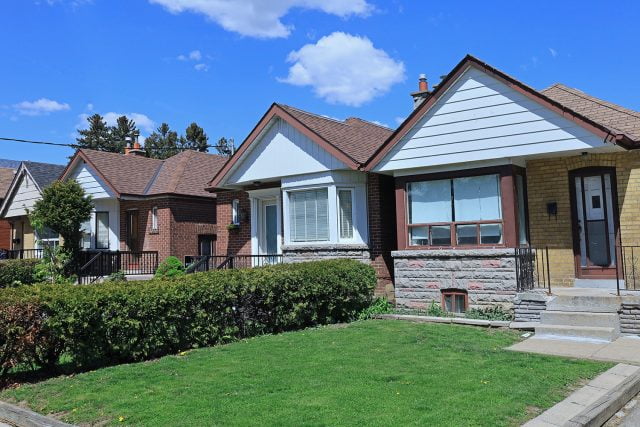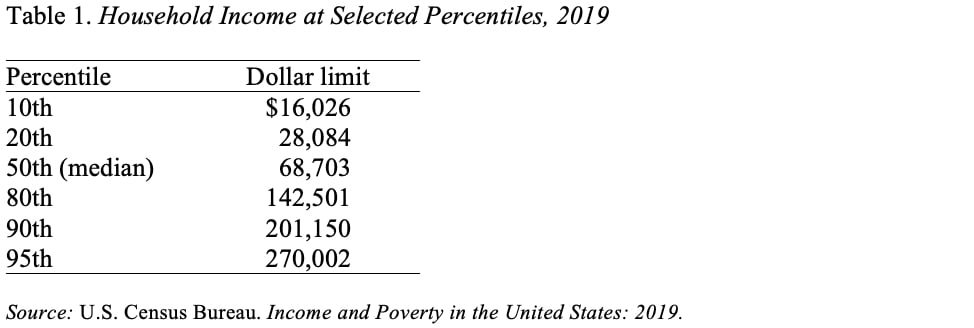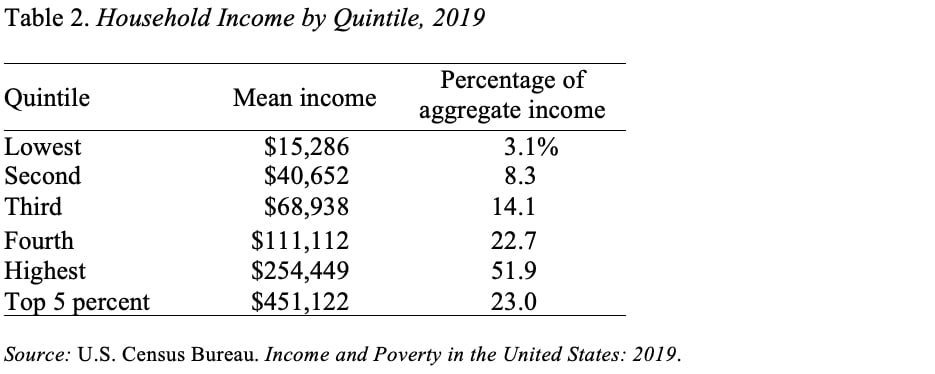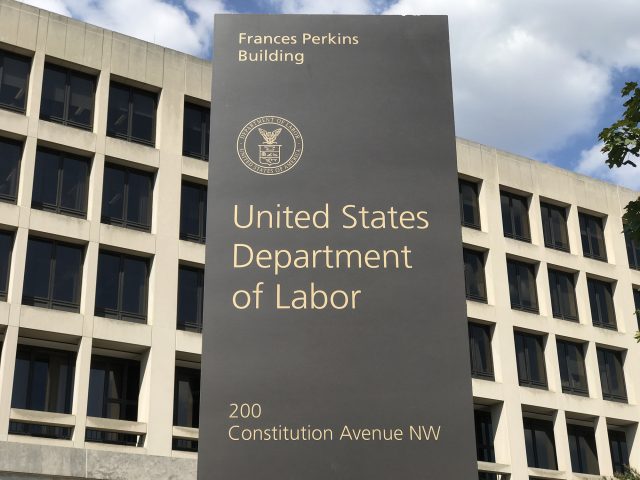
How Rich Is the “Middle Class?”
Alicia H. Munnell is a columnist for MarketWatch and senior advisor of the Center for Retirement Research at Boston College.
Some think in terms of household income of $400,000; the answer is $70,000
When the time comes to fix Social Security, one prominent proposal would raise the payroll tax and apply the tax on earnings above $400,000. Hanging around financial types and academics who worry about pensions and retirement income, it is easy to get lulled into the notion that the mass affluent – some people’s idea of the middle class – have incomes of about $400,000.
According to the data in the most recent Census report (see Table 1), the typical household in 2019 had an income of $68,703. A household with an income of $201,150 was at the 90th percentile point, or in the top tenth of the income distribution. Even at the 95th percentile, household income is only $270,002.

The thresholds must be interpreted with caution because households include old and young, urban and rural, coastal and midland, and small and large. And underreporting is always an issue. Although at no threshold do households come within a stone’s throw of $400,000 of income – much less $400,000 of earnings.
The real middle class consists of households with incomes of roughly $70,000. Not surprisingly, this group does not receive a significant proportion of aggregate income – 14.1 percent (see Table 2). The big money goes to those in the top quintile, and particularly to those in the top 5 percent of all households, where average household income does average in the $400,000s.

Keep these numbers in mind as the Social Security financing debate commences!







